Keeping the Past Alive

Photo courtesy of Canepa
Those who maintain vintage race cars face some of the same challenges as contemporary speed shops—with the added complication of obsolete parts and decades-old equipment. Here’s how these specialists keep those cars track-ready.
In some ways, maintaining a vintage race car is like maintaining a contemporary race car. Ask Karl Wilen, whose RennsportKC in Grandview, Missouri, specializes in vintage Porsches, but who also serves as crew chief and engineer for PF Racing, a professional IMSA team in the Michelin Pilot Challenge series.
In general, he said, between-race maintenance is “pretty much the same whether we’re working on a modern car or an older car: Do a full nut-and-bolt of the entire car, before and after a weekend. Ultimately, you’re going through the whole car, tip-to-toe, at every event. All fluids are changed every event in addition to your mechanical items. We would rather change oils prematurely than have an engine or transmission failure due to oil breakdown. Cars are scaled to check alignment and corner balancing. Typically, we will have different suspension settings for each track, so depending on the customer’s next event, those settings are changed to accommodate that track. That may include changes to shock settings, ride heights, corner balance, and camber/toe settings.”
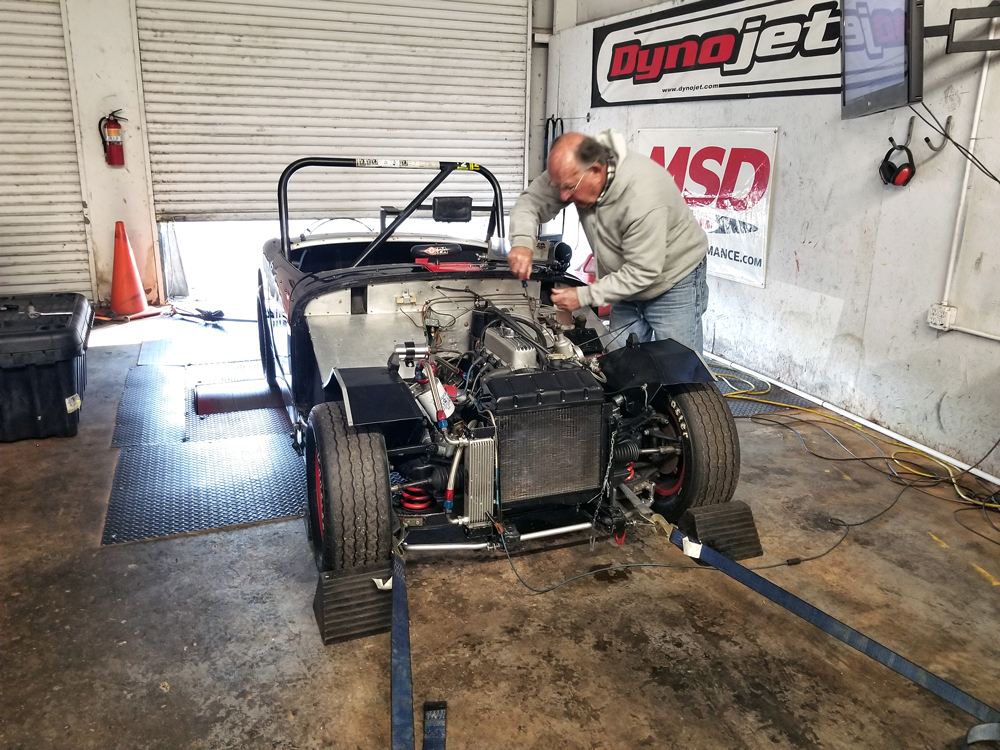
Beyond that general plan, though, the two worlds diverge sharply. “We have to spend more time really inspecting the old aluminum components—wheel hubs, uprights, things like that, even the chassis themselves for stress cracking,” continued Wilen. “These cars are 40 years old, and the metals are starting to let go over time. Metal fatigues, so we really have to pay attention to those components more so than we would with modern day cars that use, say, a sealed wheel bearing in an upright. That’s just a much more solid component than an old 911 with a two-piece front-wheel bearing riding on a spindle that has been out there for 40 years.”
And, while parts shortages affect all forms of racing, they’re greatly exacerbated on the vintage side. “With the vintage stuff, if you break something you might be able to find the part, but you also have to be really careful about what you’re buying,” Wilen said. “That part may be 40 years old, too, so you have to inspect it well before you put it on the car. You can get a worn-out part just as easily as you can get a good one.”
Wilen was among a group of vintage race experts we recently spoke with to find out what it takes to keep historic vehicles in race trim during, and after, the season. Between them, their shops service the full spectrum of vintage racing machinery, from multimillion-dollar Porsche endurance racers to four-cylinder “momentum cars.”
During the Season
“We have a standardized checklist that we go down after every event,” said Don Hoevel of Don Hoevel Racing, Fox Lake, Illinois. Hoevel specializes in Cobras, GT350s and other “Ford stuff,” he said, but also services “lots of Lotus stuff, sports racers, 2-liter sports cars, open wheel cars, Formula B cars, and vintage Indy cars.” Like Wilen, Hoevel will “nut-and-bolt the car, check the brake pads, check the brake discs, charge the battery, do a fluid service if needed, or at least check the levels, check the tires, then do a parts inventory. Do we need pads, do we need tires, how much race fuel do we need for the next event? And then we clean the car. Our saying is, ‘The car has to leave the building a lot nicer than when it rolled in.’”
Keeping the car clean has benefits beyond the cosmetic. “We keep the inside of the fenders clean so we can see any indication of tires rubbing,” said Mitch Bressler of MSA Classics, Carrollton, Georgia. “Or, why is there grease on the back fender now? Do we have an axle seal leaking? Let’s fix that.”
While Bressler is known as “the British guy,” and the cars serviced by MSA Classics are primarily vintage MGs and Austin-Healeys, he works on a wide range of cars, everything from an original Willys Jeep to late model Morgans. His clients are involved in road racing, circuit racing, and rallies. One client recently purchased a Winston Cup car, and Bressler is eager to get it into the workshop to see what magic he can work on it.
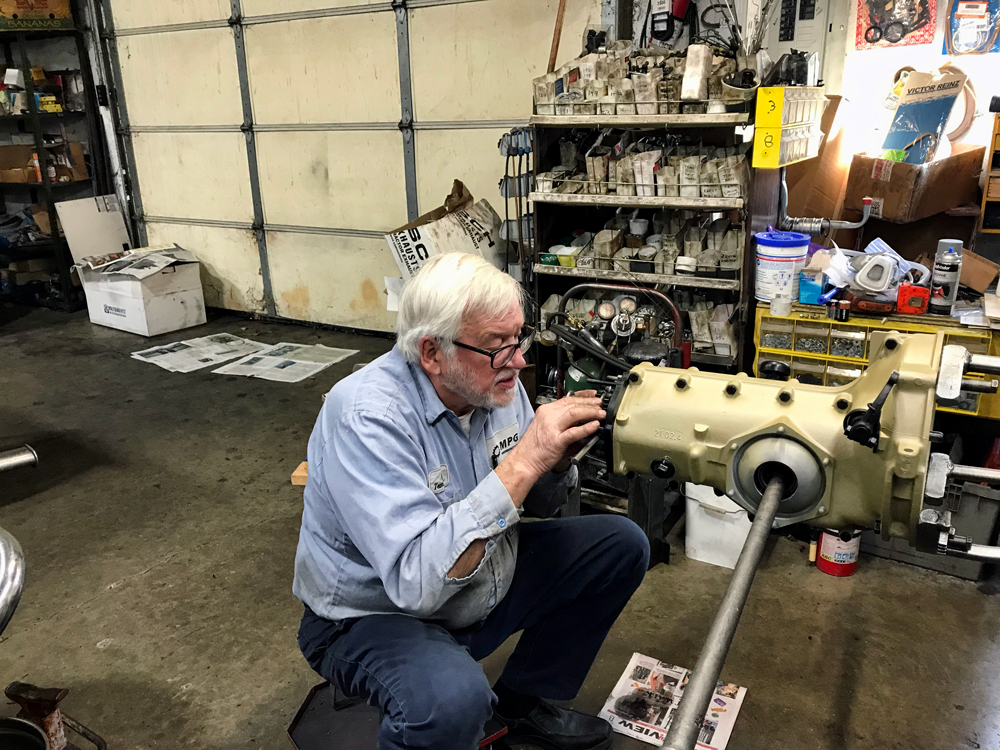
His maintenance philosophy is to keep his customers’ cars “at the level they were when they started the season. We’re looking at anything that’s a fail point that we know of. But really, we build the car so that as much as possible is done during the offseason. That way, when we get to the track, we’re just fixing problems as they come up. We try not to make a lot of changes throughout the season. But if we can see another second sitting over there, we’re going to grab it, work on it, and make it happen.”
The key to maintaining these cars is “catching the problem before it happens,” Bressler added. “I’m sure you’ve heard this 100 times: We win the races in the shop; we don’t win them on the track. I believe the will to win is not nearly as important as the will to prepare to win. And as prepared as we try to be, it’s important to remember that these are vintage cars. Despite our best efforts, the unexpected can still happen—a bad wheel bearing, the gears seize, broken oil pumps, things that are fine one weekend and not good the next. We don’t have a Magic 8 Ball here to tell when something is going to fail.”
“My theory is, as soon as the race is over, that’s the time to do post-race maintenance on a car. Not wait until it’s time to race it again,” said Bruce Canepa. “After it completes a race weekend, look at everything in the car, evaluate everything in the car, figure out what it’s going to need, and get the process started.”
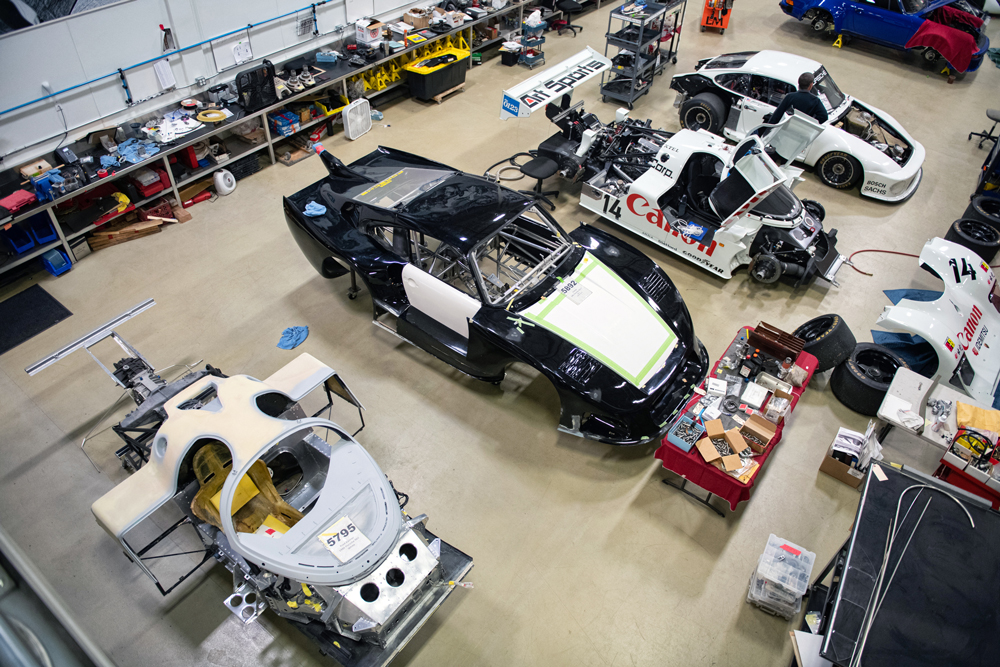
The vintage race cars in Canepa’s shop in Scotts Valley, California, can run the gamut from a Porsche 917 to a Maserati Birdcage, Can Am cars, 1970s Trans-Am cars, and open wheel cars. “The common thing among them is, they’re all race cars,” Canepa explained. “We have to understand what each one needs in terms of regular service and in terms of the things that can fail. Every car is different. They all have shortcomings somewhere. In the old days, a lot of the R&D was racing the cars. If they failed then, and someone hasn’t changed it or re-engineered it, it’s going to fail today at some point.”
Understanding how to maintain a vintage race car “is understanding the life cycle of all the componentry in the car,” Canepa said, “how it was used in the beginning, and how it’s being used today.” A car like the 917, for example, “was designed for endurance racing, 24-hour races, plus practices, qualifying, and everything else. So they’re really designed to be 30-plus hour cars from a reliability standpoint.” The engine in an endurance car can go “at least 50 hours” before rebuilding, Canepa said, “and if the driver’s really good in terms of how he races and takes care of it, he might get 70 hours out of an engine without rebuilding it.”
A Trans-Am car, on the other hand, “is reliable, but it’s not designed to run a lot of hours. So a Trans-Am engine may need a rebuild in 20 hours, or 25 at the most.” Plus, Canepa said, “we’re checking clutches and suspension pieces because they wear out quicker than an endurance car. These cars are heavier. A ’70s era Trans-Am car is a 3,250-pound car, and it’s getting pounded pretty hard on the race track. We check a lot of mechanical things on that car because they just wear out faster. It’ll go through more brake rotors, brake pads, etc. In period, it was designed to run only two hours or less in a race.”
“As a general statement, the fancier and faster the car, the more maintenance it’s going to need, usually requiring a professional level of support,” said Vic Skirmants of 356 Enterprises, North Branch, Michigan. As his business name implies, Skirmants works almost exclusively on Porsche 356s, cars he has raced since 1965.
“I’ve been with them my whole life, and to me it’s about the most reliable car there is, unless the driver screws up. Once it’s set up, a 356 doesn’t require much maintenance. We’re just checking tire pressures and checking the oil during race weekend.” After the race, Skirmants will perform a valve adjustment, a leak-down test, bleed the brakes, freshen the brake pads, and grease the front end. “Pretty minimal,” he said. “If everything is in good shape, then there’s nothing to repair, unless the guy has shoved it in the wrong gear at the wrong road speed. Then you get bent valves, broken lifters, all that kind of stuff.”
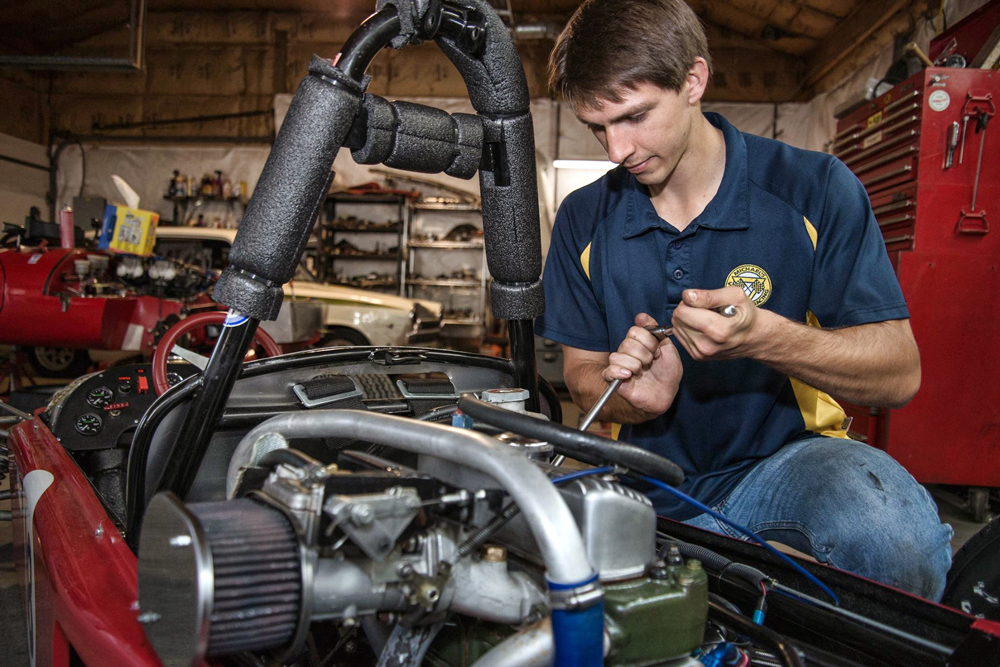
There are certain maintenance tasks that apply to all cars, Skirmants said. “The car has to be set up correctly as far as corner weights and alignment, things like that.” He also recommended making sure the brake fluid in the car is fresh and to use standard brake fluid, not fluid with silicone. “Race cars do not like silicone brake fluid, though nobody really understands why.”
“As a baseline, every weekend after a race we do a nut-and-bolt inspection of the whole car,” said Michael Clifford Jr. of Michael’s Vintage Racing, which recently moved from New York to Scottsburg, Virginia. His is a second-generation shop, focused on the British sports cars his father worked on when he started the business in the 1990s.
Beyond the regular maintenance, “there are also areas where we try to make incremental improvements on the cars,” Clifford said. As an example, he cited a customer’s Ginetta. When Clifford was moving the car, “I noticed the throttle travel was very long, so I made an adjustable modification to the linkage so we can adjust the quickness of throttle application. That will help the driver be a little bit more on top of the car.”
Post-Season Maintenance
For Wilen at RennsportKC, post-season maintenance means “a full teardown. We still follow our same protocols; we nut-and-bolt everything, but a couple of months of downtime gives us more time to send stuff out for rebuilding without being in a two-week crunch. We pull the shocks out, tear them down and test them, and if anything’s leaking, we send them out for a rebuild. We typically replace wheel bearings once a year, that way rarely during the season do we have a bearing failure. We rebuild brake calipers, all that fun stuff.”
At Hoevel’s shop, post-season maintenance “depends on how many miles were done in the race season and how hard those miles actually were,” he said. “At Road America, if you turn lap times of 2 minutes 18 seconds with some of these cars it’s a huge strain, but if you’re turning 2 minutes 30 seconds, you’re not using the brakes up that hard, not overstraining the motor.”
Typically, Hoevel will do an engine rebuild “every other year depending on the engine. Same with the gearbox. We’ll pull the suspension off, crack-check the wishbones, crack-check the uprights, we’ll even crack-check the wheels. Fifty-year-old magnesium is not the safest thing to race on.” For Can Am cars, which are built with an aluminum monocoque and have engines that can make north of 1,000 horsepower, “we’ll look over the chassis. It twists and turns, and all of a sudden it starts loosening up rivets that hold the chassis together. We have to look at the rivets and make sure everything is still snug.”
Skirmants, too, said post-season maintenance at 356 Enterprises depends on how hard the car was raced during the season. “If somebody hasn’t used the car that much, the maintenance is pretty minimal. If the car was used quite a lot, you may want to pull the engine down, check everything out, wheel bearings, things of that nature.”
“In the beginning, I was asked to build cars to run two to three seasons,” said Bressler, so at MSA Classics, “we’d go two seasons or so before doing a major engine pull-down. But guys now, they want to do it every year. They figure it doesn’t cost that much, and they’d rather know what’s going on. Engines for one of these little British cars can be upwards of $20,000, so the common-sense thing is, let’s spend a couple hundred dollars to take the engine apart and look at everything. Let’s catch that crank before it’s cracked, let’s get those rings replaced before they hit the cylinder wall.”
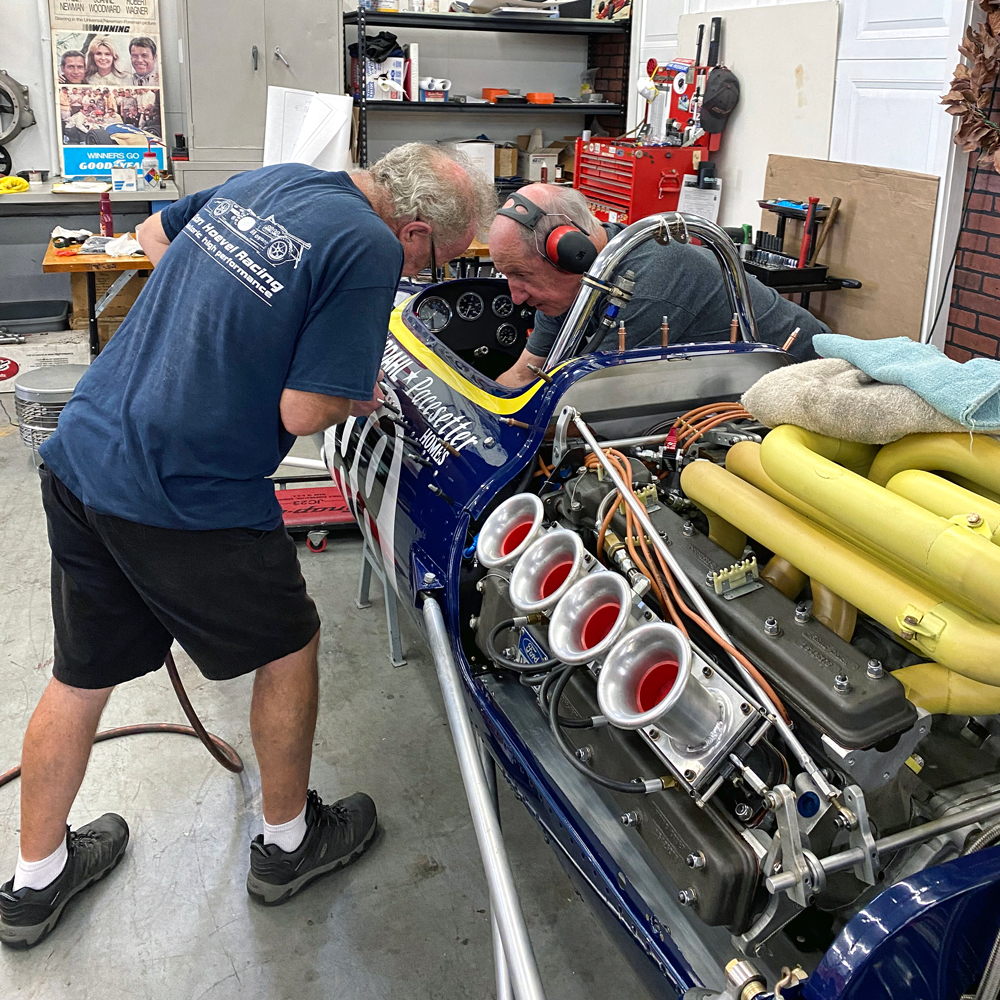
Beyond the engine compartment, “we won’t do a total tear down,” Bressler said, “but we’ll do wheel bearings, pull differentials out and check them, inspect the gearboxes, and try to be ahead of the curve so we can start next season and they won’t have to miss one or two races.”
“Since COVID-19, everything has slowed; shortages of technicians, parts, materials, freight delays. So as soon as you know when you’re going to run that car, get ready,” said Canepa. “If you’re going to run the car in August, address what needs to be done as early in the year as possible. Make a list so you can get the car totally race prepared. Don’t try to get it ready with one week, or 30 days, or even two or three months to go, because you won’t find the parts. You can’t do it that fast.”
Good Parts—and Help—are Hard to Find
Canepa’s comment about finding parts was a common concern among these shops.
“Parts availability can be a huge problem for me and my British cars,” said Bressler. “We’re getting to be a forgotten car. If I need a crankshaft, it’s going to be six months before I can get one versus in the old days when they were sitting on a shelf. That puts me in a position of, do I pull the trigger and buy five parts sitting on the shelf hoping I can sell them, or risk saying, ‘Sorry customer, you can’t make the race because of this.’”
Clifford sees some relief in the parts supply chain because “some of the smaller volume manufacturers, like Ginetta and Lotus, didn’t want to manufacture all their own parts, so they would use parts from Fords, or Standard Triumphs, or something like that, which makes it easier than you would think to get a lot of the parts.”
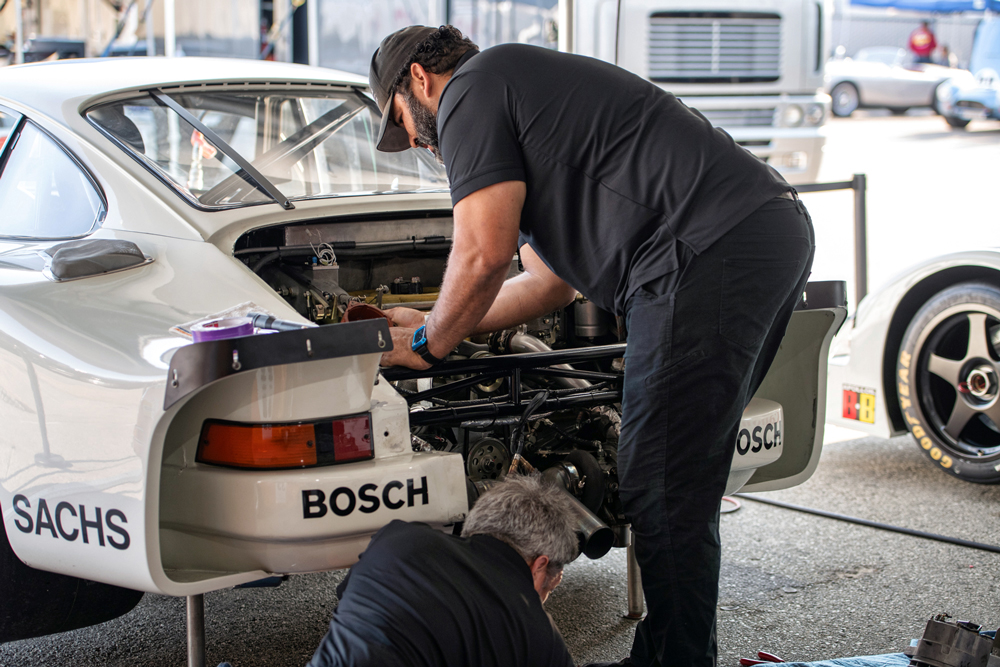
But not all of the parts. He, like others we spoke to, has had a hard time finding brake pads (“I had to order brake pads from England, and the entire country’s stock was gone”), pistons, suspension pieces, “parts that are normally widely available are all backordered. We have to plan farther ahead than normal and carry more inventory than normal, so I have it when I need it.”
“There are two challenges now,” Canepa said. “It’s parts availability and it’s people. You can’t hire enough people with experience to work on these old cars. That’s our number-one problem. We can make parts, or we can figure out who can make the part for us if we can’t. But I can’t make a technician. There are just not enough people with the skill sets that these cars require. Experienced mechanics are our most valuable asset.”
It’s not as simple as bringing in a technician with contemporary race car experience, Canepa said. “New race cars are like new production road cars. The technicians just replace components. They know that certain parts time-out at a certain number of hours or miles, so for them maintenance is a process where they disassemble the car after it’s raced, replace the components that they know are now timed-out, and put the car back together.
“With old race cars you not only don’t have the parts to do that, but there also aren’t any guidelines that say this gets replaced at 4,000 miles or that gets replaced at 50 hours,” Canepa continued. “You have to be able to disassemble the part and know how to evaluate the part, whether it’s a crack-check process or just a visual. This is old-school mechanical work. You need mechanics who have experience to do that, who can look at a part and say, ‘Those gears are worn out,’ or ‘That bearing’s bad,’ or ‘In my experience, these failed at this time for this reason.’”
“Trying to find people for the last five years has just been blindingly difficult,” said Hoevel, who pointed out that the problem is being exacerbated by the changing definition of a “vintage” race car. “What used to be a vintage car was 25 years or older. Now you see two-, three-, five-year-old Porsches, LMP cars, and things like that. A lot of these modern cars have a lot more data systems and computer systems in them, so you need somebody who’s computer literate for one, but also understands car systems and data systems so they can actually read the data and understand what they’re reading.”
Customer Relations
Most of the customers these shops work with entrust their cars, the maintenance, transportation and even trackside support to the professionals.
“I have built my reputation for so long now everyone realizes, let me have the car, let me do my thing,” said Wilen. “It’s going to be reliable; it’s going to be sorted, and we probably won’t have to put much of a wrench on it during the weekend.”
“A few of our customers tell us to go ahead and do what we think,” said Clifford, “but none are completely separate from the process. They like to know what’s happening and why. That’s part of the enjoyment for them—and us—to collaborate about how to improve the car and why we’re improving it the way we are. When the driver is informed about the changes we’re making and why we’re making them, they can use that information on track to tell us if it’s working or not, or if there’s something related that might need attention afterwards.
“I would think that’s probably the case everywhere,” he added, “because in vintage, the owners are here for one reason: they’re enthusiasts. I’m sure there are a few that just like to just get in the car and drive, but a lot of them are really in love with the whole experience.”
“We have a great deal of interaction with our clients,” said Bressler. “We look at our business as being in partnership with our race drivers. Winning races is a package deal. The workshop and the driver work together to make the best decisions for their car. It’s the driver’s skill on the track that shows the quality and ingenuity of what we do in the workshop.
“I want it to be an enjoyable experience,” he said. “I want them to get their money’s worth. These guys are spending upwards of $7,000–$8,000 a weekend, between entry fees, towing, fuel and tires and everything else. I want them to be able to do the whole weekend instead of one lap and done.”
Sources
356 Enterprises
356enterprises.com
Canepa
canepa.com
Don Hoevel Racing
facebook.com/Don-Hoevel-Racing-610220982361435/
Michael’s Vintage Racing
michaelsvintageracing.com
MSA Classics
msaclassics.com
RennsportKC
rennsportkc.com
 MEMBERSHIP LOGIN
MEMBERSHIP LOGIN JOIN PRI
JOIN PRI


